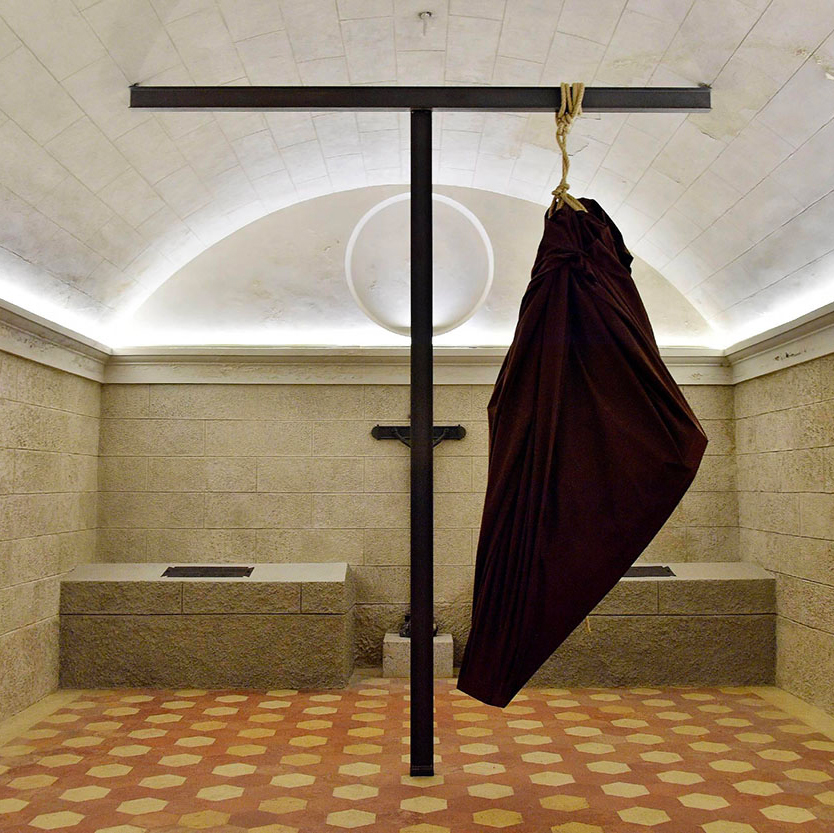In an age that seems to have loosened its connection to the rituals and symbols of tradition, Easter draws our attention back to a mystery that continues to challenge us: death, sacrifice, and, above all, the possibility of rebirth. One need not be a believer to recognize the cross as a universal archetype—a symbol of pain, endurance, and transformation. And yet, the relationship between art and faith remains a complex dialogue, as noted by Jesuit priest Andrea Dall’Asta, director of the San Fedele Gallery in Milan since 2002.
When sacred art is mentioned, our minds quickly turn to the great masterpieces of the past—from medieval icons to the monumental altarpieces of the Baroque period. Nevertheless, even in the MAN collection, we find works that reflect on these themes. Religious processions, with the body of Christ on the cross moving through streets lined with crowds and silence, become emblematic images of popular devotion. Giovanni Ciusa Romagna portrays them in his famous Processione (1933) and in a lesser-known version from 1945. In the same years, Carmelo Floris and Mario Delitala captured the solemnity of these scenes, while today, on Holy Thursday, Giovedì Santo (1928) by Francesco Congiu Pes comes to mind.
But what remains of the sacred in contemporary art?
If twentieth-century art still sought to express mystery through iconic beauty and the sanctity of gesture, many contemporary artists approach the sacred with languages that—sometimes starkly—reveal the tension between spirit and flesh, between promise and suffering.
The Greek artist Jannis Kounellis (1936–2017), who adopted Rome as his home, explored this theme in a radical way. His installation Untitled (Revelation), created in 2012 for the San Fedele Gallery, is a site-specific work composed of a large sack hanging from a beam. Inside, it conceals a cross: its shape is not visible, but it is suggested by the weight that pulls on the fabric—like a truth pressing to emerge. The burden is unbearable.
Kounellis does not represent the Crucifixion; he evokes it. He stages its tension, the anticipation that precedes resurrection. The hidden cross waits to be recognized. Could this be the condition of contemporary spirituality—a weight that is invisible, yet real, asking to be revealed?
Freed from representation, contemporary art can pierce the mystery in new ways, opening poetic passages and bringing pain—and, above all, hope—back to the center of our vision.
Elisabetta Masala

